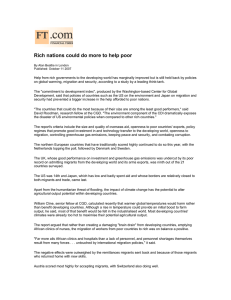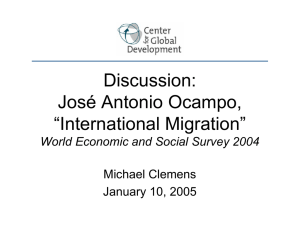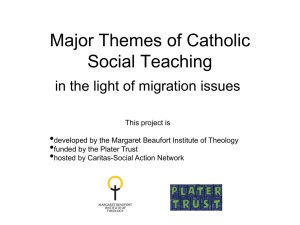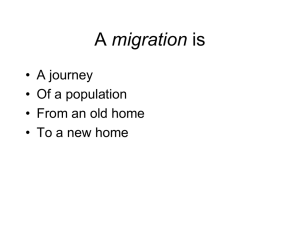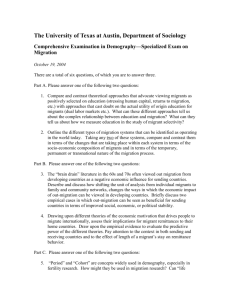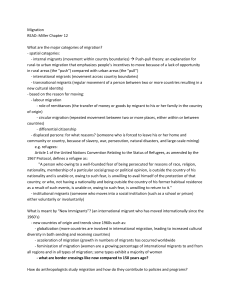polishmigration
advertisement
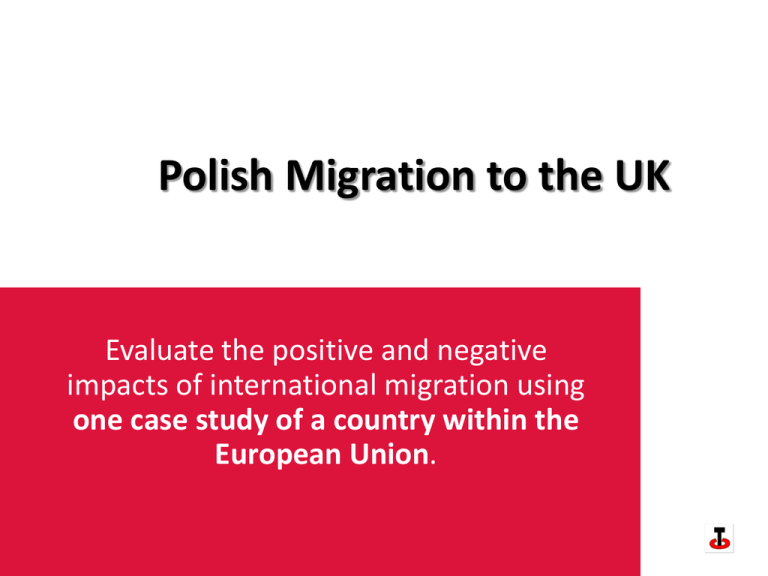
Polish Migration to the UK Evaluate the positive and negative impacts of international migration using one case study of a country within the European Union. The term used to describe ‘Movement of people from one locality, or country, to another.’ http://en.wikipedia.org/wiki/File:Herb_Polski.svg In this case study the migration is international, from one country to another. http://d-maps.com/index.php?lang=en These attract migrants to a different locality. Vacancies for unskilled and semiskilled workers. http://en.wikipedia.org/wiki/File:Flag_of_the_United_Kingdom.svg These encourage, or force, migrants to move from their original locality. High unemployment In 2004, Poland joined the European Union, it was one of the so called A8 countries. Czech Republic Estonia Hungary Latvia Lithuania Poland Slovakia Slovenia These countries had a standard of living which was 40% of the European average. http://en.wikipedia.org/wiki/File:Flag_of_Europe.svg The Treaty of Rome allows any European Union citizen to travel, work and settle within another member state. Due to the difference in living standards there were fears of mass economic migration. It was agreed that member states could limit migration from the A8 countries till 2011. But, the UK agreed to accept migrants as long as they registered to work. Situation now- •Around 50% of Polish migrants return home. Most remember where young people. •Economic crisis has resulted in a drop in the value of the pound, it is less cost-effective. •Current economic crisis has reduced job opportunities, whilst the Polish economy has continued to grow. •Wages in Poland have increased, but living costs have remained stable. •Major building projects require construction workers, such as stadia for the 2012 European Football Championship. • Missing home!
